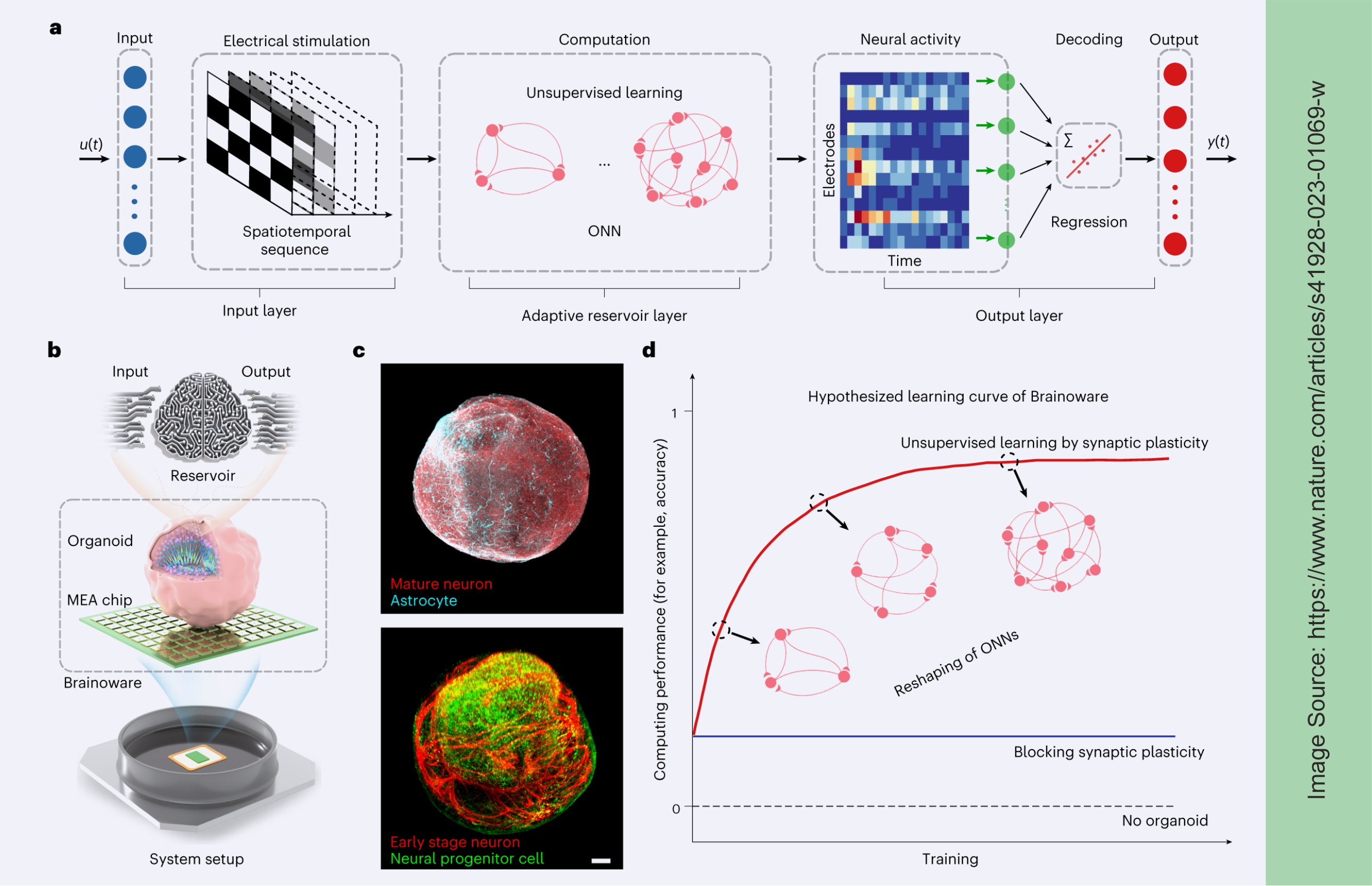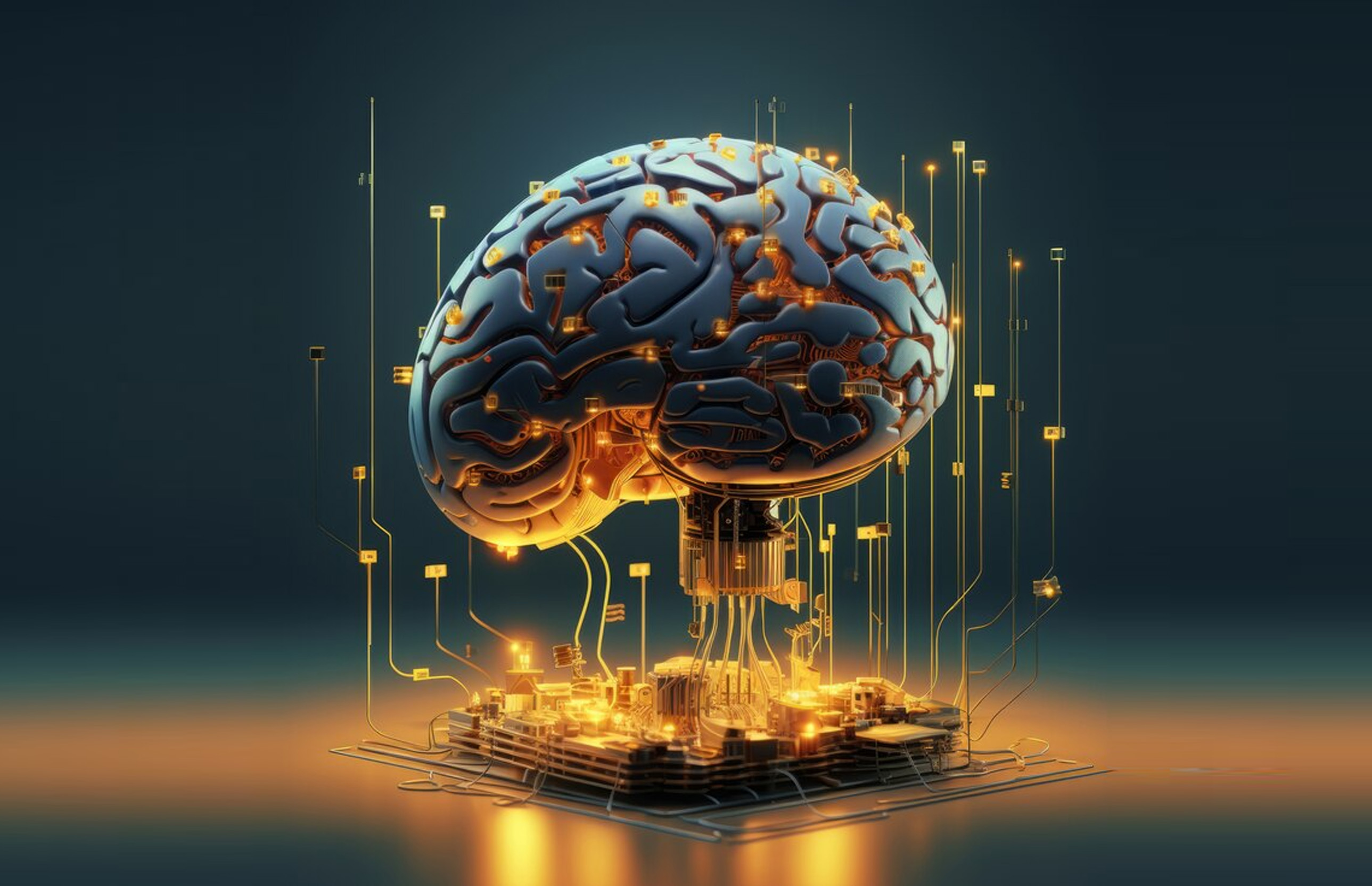Introduction:
In recent years, a groundbreaking intersection of neuroscience and technology has led to the emergence of what some scientists term "Organoid Intelligence" or "Organoid Neural Networks." This convergence has paved the way for unprecedented advancements in artificial intelligence (AI) by harnessing the innate decision-making capabilities of neurons. Spearheaded by pioneering researchers such as Dr. Thomas Hartung from John Hopkins University, this field has seen remarkable progress, culminating in the development of a human brain on a chip.

Development and Research Efforts:
Months ago, Dr. Hartung unveiled his work on cultivating intelligence in a dish, combining organoids containing approximately 10 million neurons with cutting-edge computing hardware. Today, a consortium of researchers from the Indiana University of Bloomington, the University of Florida, and the University of Cincinnati School of Medicine has taken this endeavor to new heights with their groundbreaking paper titled "Brain Organoid Computing for Artificial Intelligence."
Brainoware: The Future of AI Hardware:
At the forefront of this research stands Brainoware, a revolutionary concept poised to redefine the landscape of AI hardware. Lead researcher Feng Guo elucidates that Brainoware represents a paradigm shift, leveraging the intricate neural networks within brain organoids to drive computational tasks. This innovative approach marks a significant departure from traditional artificial neural networks (ANNs), offering a glimpse into the future of biocomputing.
Technical Breakthroughs:
Guo's team achieved a remarkable feat by cultivating clusters of specialized stem cells, evolving them into functional neurons. These brain organoids, though minuscule in size, boast unparalleled complexity, connectivity, and learning capabilities. Through meticulous experimentation, the researchers interfaced these organoids with circuit boards using an array of electrodes, enabling machine learning algorithms to decode their responses.
Performance and Challenges:
Despite its nascent stage, Brainoware showcased promising results, demonstrating a 78% accuracy rate in a speech recognition task. However, challenges persist, including the sustainability of organoids and the need for specialized resources like CO2 incubators. Nevertheless, Brainoware heralds a crucial step towards energy-efficient biocomputing systems, contrasting sharply with the colossal power consumption of current AI hardware.
Implications and Future Prospects:
The potential applications of Brainoware are far-reaching, encompassing realms such as cognitive neuroscience and personalized medicine. By studying organoid intelligence, researchers aim to unravel the complexities of neurological conditions and devise innovative interventions. Moreover, Brainoware's spatiotemporal learning abilities open new avenues for real-time data processing and on-chip learning, propelling AI to unprecedented heights.
Conclusion:
As we stand on the cusp of a new era in AI and neuroscience, the convergence of biological and computational systems holds immense promise. While challenges abound, the potential of Brainoware to revolutionize AI hardware and unlock the mysteries of the human brain is undeniable. With each breakthrough, we inch closer to realizing the transformative power of human brain on a chip—a testament to the ingenuity of scientific inquiry and technological innovation.

